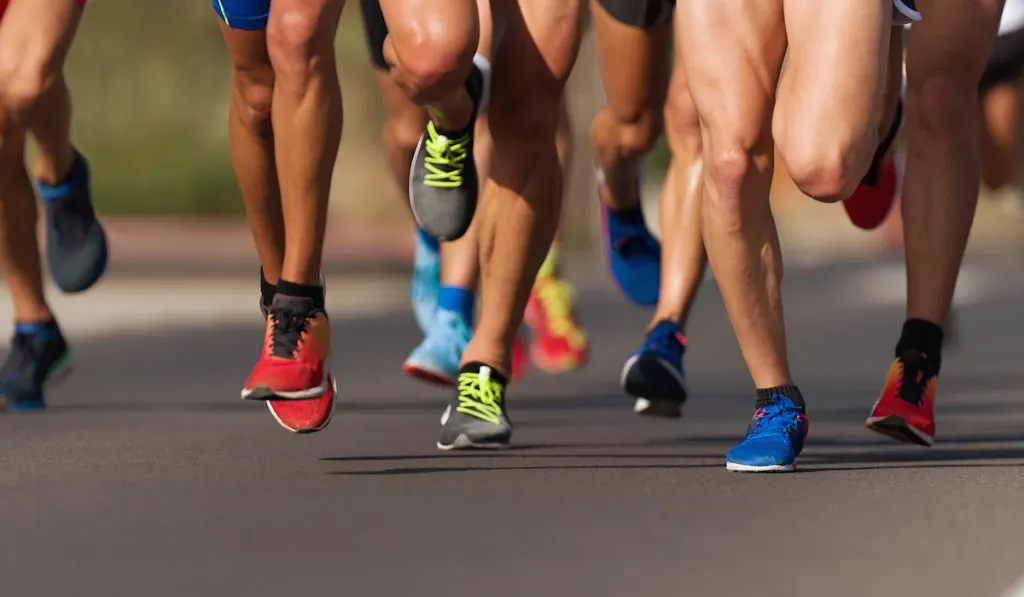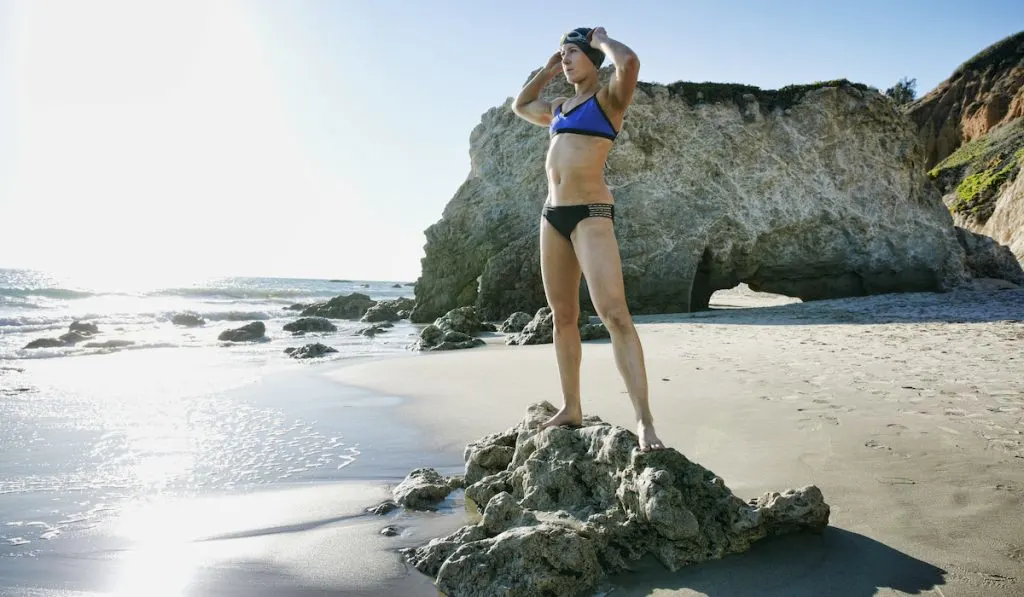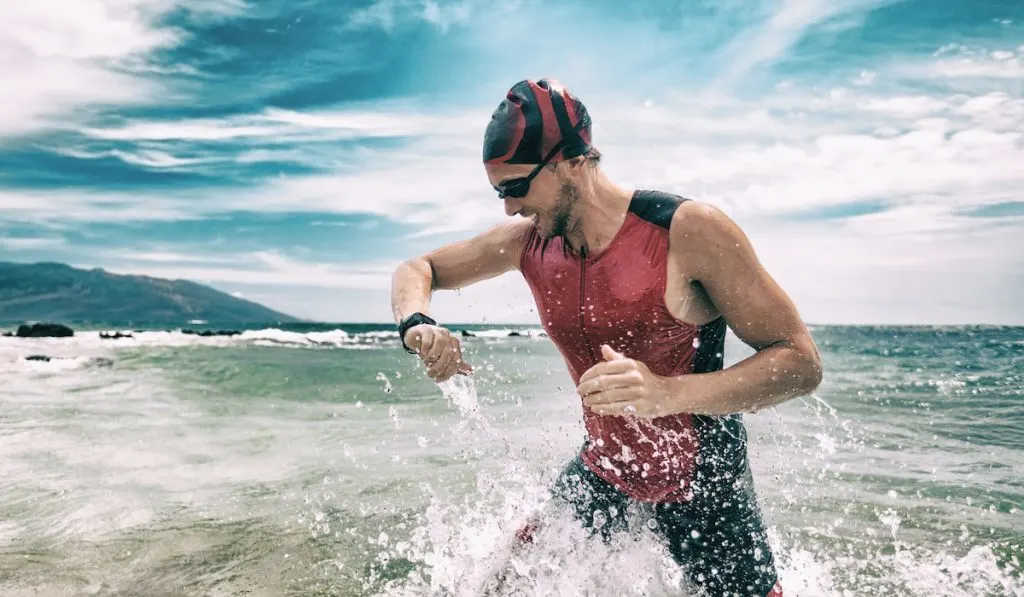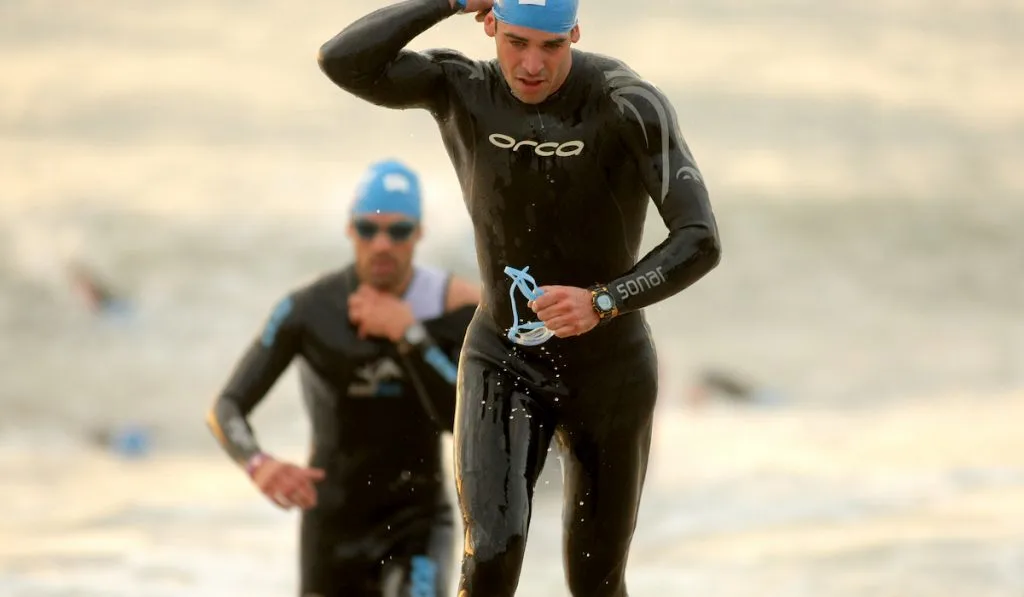If only all of us could be 6 ft 6 in tall with lean muscle mass and low body fat. We’d glide through the race effortlessly, slicing through the water stage, using all of that downward force on the bike, and making smooth strides during the run.
Alas, we can’t all be tall athletic specimens. Each of us had to deal with the bodies we get when we’re born.
Some of us are tall, and others short. Some triathletes carry more muscle on their frames. Others are gifted runners. For every talented swimmer, there is an equally talented cyclist.
But how much does height matter for a triathlete?
There is no question that height helps with things like stride distance and Olympic swimmers tend to be taller than your average person. Usain Bolt, widely recognized as the fastest sprinter in the world, is 6 ft 5 in tall.

So yes, being tall helps you in most sports. However, the weight to height ratio probably matters more when it comes to triathletes. Not many great marathoners are over six feet tall, and most of the elite triathletes are under six feet.
Does height matter for a triathlete? Let’s take a look.
Why Height Matters So Much When We Are Talking About Weight
If you’re over six feet tall, you’re likely going to have an advantage in the swim. You’ve got those long arms pulling you through the water and can often generate a great deal of power with your kicks.
When you’re on the bike, there’s probably little to no advantage to being taller because bikes can be purchased and adapted to the same dimensions for basically any frame. Mechanical engineering makes this a wash.
However, height really comes into focus during the run, the most challenging portion of the triathlon for many racers.

Height matters on the run because, when you’re tall, you’re often heavier.
Two athletes with the same muscle mass and body fat percentages are going to weigh significantly different weights if there is a large height discrepancy. And carrying around all of that extra weight is going to matter when you’re in mile 22.
Weight also matters because bigger bodies generate more heat. The more energy you’re creating, the more you will sweat, and the faster you’ll drain your body’s reserves.
Over long distances, the way your body manages and dissipates heat matters a great deal. That’s why the majority of elite long-distance runners have a similar build. Most of them are short and aren’t carrying around a lot of weight.
When you’re tall, the weather also comes into play. Taller runners will burn off more energy much more quickly on hot days. Height may not be as big of a factor when the weather is nice, but it’s something to be aware of.
What Is the Average Height and Weight of Triathletes?
If you go to any triathlon, you’re going to see people of all shapes and sizes in attendance. Racers are there to participate in the event and aren’t necessarily concerned with breaking any records.
If you are a hobbyist runner, or if you want to get into triathlons seriously, don’t let your current height or weight stop you from participating. Get out there and have a good time!
However, as you move into the upper echelons of the sport, things narrow a bit. Many of you will be surprised to read that elite triathlon athletes come in varying heights.
You’ve got Andy Potts and Patrick Lange who are five inches apart in height. There is also a 35 lb gap between them. So what gives?

The key here is to understand that elite triathletes typically are in the same range when it comes to height-weight ratio. They need enough muscle to help them power through the swim, and yet need to be light enough to push things during the bike and run portions.
Many expert trainers and fans of the sport recommend anywhere from 2.1 lbs to 2.3 lbs of weight per inch as the ideal for triathletes.
Taller athletes usually come in at the higher end of that weight range because they’re carrying around more bone and muscle.
Finding Your Power-to-Weight Sweet Spot
There have been tall and lean champion triathletes, and there have been short and powerful ones. Height, by itself, is not indicative of how well someone will do in events. However, extremely tall elite triathletes (people over 6 ft 5 in) are rare.
A key to successful racing is finding your ideal ratio of weight to height. This will give you the power you need to get through the climbs and the swim and will help you manage your energy levels and calorie burn through long portions of the race.
Of course, if you’re tall or short, it shouldn’t stop you from chasing your dreams and getting deeper into the sport. There’s a sweet spot for everyone that requires constantly refining with diet, exercise, and analyzing your race results.
If possible, work with a trainer to tweak things with your weight to find your ideal race weight that matches whatever height you are.

If you’re carrying around a lot of excess weight because you like to hit the gym, cutting back on calories can be a challenge for people who are training to race.
If you cut your calories by too much, your body can fatigue easily and you won’t get the training results you need to be in peak form during events.
Working to find the ideal weight will keep you feeling strong throughout each of a triathlon’s stages. The challenge is finding a ratio of weight and height that helps you excel in the swim, bike, and run.
